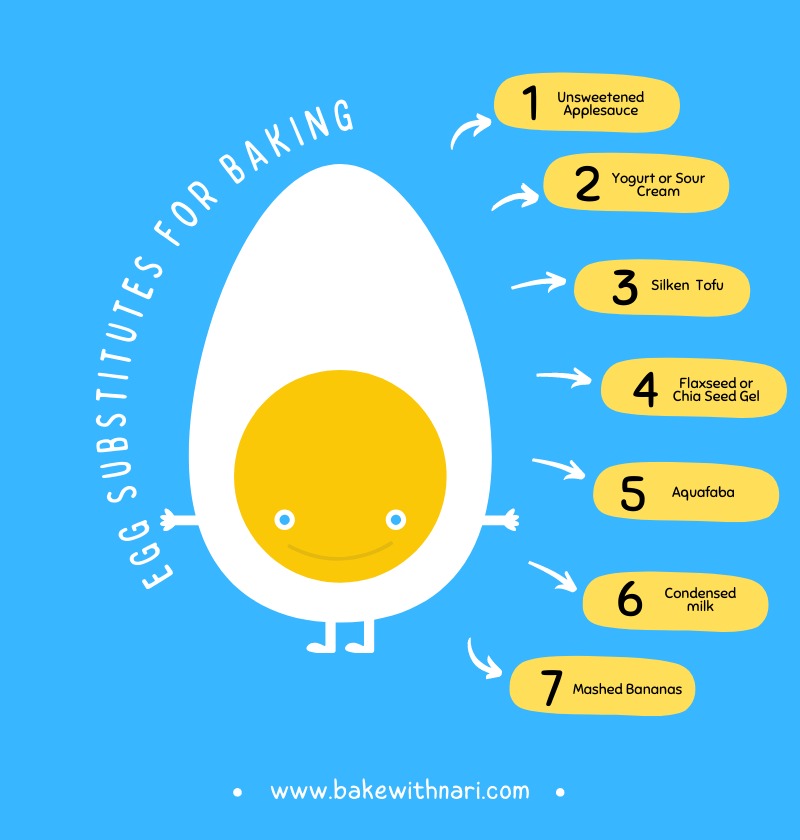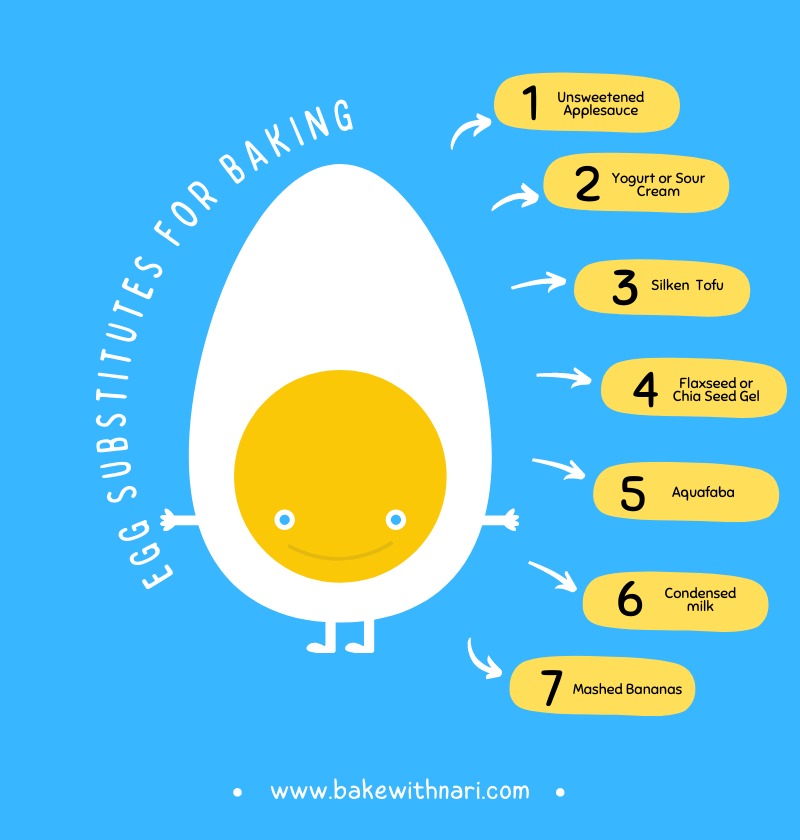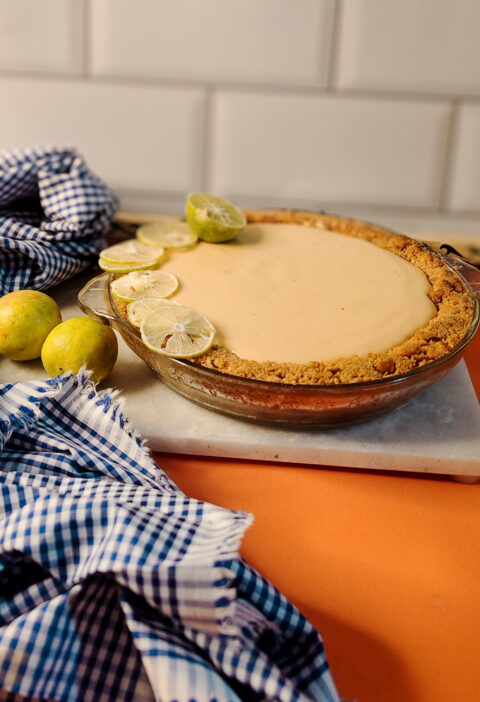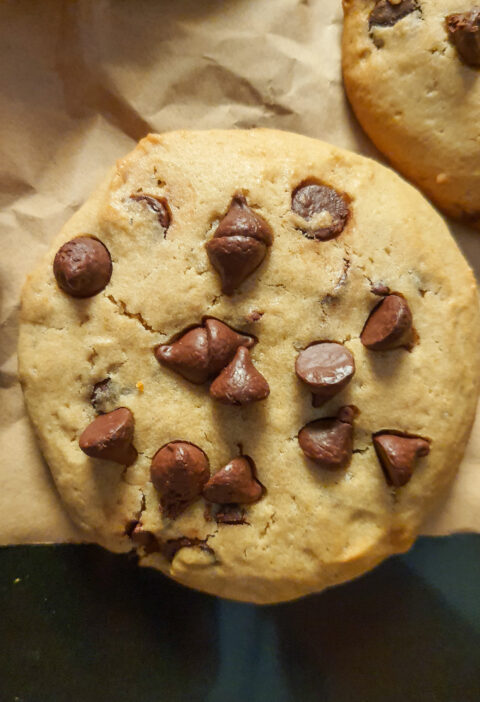
One question that I asked the most on my Instagram is whether there is an eggless substitute for a recipe I baked recently. The reason to eat eggless could be many dietary restrictions or allergies, veganism, health concerns, cultural practices and personal choices. Whatever the reason there are many people who prefer eggless baked goodies and let me surprise you they are equally delicious and yummy. Let’s bust another myth that baked good made with eggs are the only ones that are the best, the truth is if your eggless recipe is well balanced you can achieve the same texture, taste as an egg recipe.
No, eggless baking is not difficult either, anyone can bake an eggless dessert if they have a few pantry staples and an oven or a microwave. Here are a few of my recipes that you won’t believe are eggless Eggless Lemon Curd Strawberry Tart , Eggless Peanut butter Brownies, Eggless Malted Milk Powder Chocolate Chip Cookies,Eggless Ferrero Rocher Cake try them and you will not be disappointed. You wont be ready to belive that these recipes are eggless as there texture and taste is just as good as an egg recipe. Before we delve further into eggless baking substitutes its important to undertsand why eggs are important in a recipe?
Why do we need Eggs in a recipe ?
Eggs play several important roles in baking. Here are some reasons why eggs are commonly used in baking recipes:
- Structure and Binding: Eggs provide structure to baked goods. The proteins in eggs coagulate during baking, helping to set the structure and give stability to cakes, cookies, and other baked goods. They also act as a binder, helping to hold the ingredients together and prevent crumbling.
- Leavening: Eggs can contribute to the leavening process in baking. When beaten or whipped, eggs incorporate air, which helps baked goods rise and become light and fluffy. The proteins in eggs also coagulate during baking, further contributing to the leavening and rising of the final product.
- Moisture and Texture: Eggs add moisture to baked goods, keeping them moist and tender. They also contribute to the texture, providing richness and a soft, velvety crumb. The fats in eggs contribute to the texture and flavor as well.
- Emulsification: Eggs act as emulsifiers, helping to combine ingredients that wouldn’t typically mix well, such as oil and water-based ingredients. This leads to a smoother and more cohesive batter or dough.
- Flavor and Color: Eggs contribute to the flavor of baked goods, adding a rich and savory taste. They can also enhance browning and contribute to the desired golden color on the surface of baked goods.
Even though eggs are used in all kinds of desserts it’s important to understand that egg and its yolk and white, are sometimes used separately or together to create a different kind of texture. For example, for pavlova you need egg whites, in a custard you need the yolks, in a cookie you need the whole egg or a yolk separately. Different part of eggs are used to achieve different results in baking therefore when egg is brushed on top of an unbaked bread it gives a golden color to the bread when it comes out of the oven. So one must keep in mind that egg is a very versatile ingredient and to substitute it is a very challenging task. As each recipe requires a different texture it’s important to use the right egg substitute to achieve the right texture.
Why do we need eggless substitutes?
Imagine sitting in a fancy restaurant and you decide to eat dessert but when you look at the dessert menu there are no eggless options can you believe the disappointment. How unfair not to enjoy desserts only because they aren’t eggless. Well these eggless substitutes are here to help you enjoy all kinds of baked goods without worrying about it having eggs. These eggless baked goods are just as good and can be made with pantry staples, infact some of them are easy to make/find. I have given their advantages as well as disadvantages so that its easier for you to choose whichever one is most suited to your recipe needs. I have given the quantity of each eggless substitute in ratio to an egg so that you know how much to use. Below is a helpful list of eggless substitutes readily available .
Eggless Substitutes
- Unsweetened Applesauce: Use ¼ cup of applesauce to replace each egg. It works well in recipes like cakes, muffins, and quick breads. It adds moisture and helps bind the ingredients. It’s very easy to make at home all you need to do is peel and core the apples and cook it in water and then blitz them to make a puree. If you want to buy apple sauce from a shop, be sure to notice whether its an unsweetened one or a sweetened one. If it’s sweetened then you would need to adjust the ratio of sugar in the recipe.
- Here’s how you can use applesauce as a substitute:
- In Cakes and Cupcakes:
- Replace each egg with ¼ cup of unsweetened applesauce. This will help keep the cake moist and tender.
- In Muffins and Quick Breads:
- Replace each egg with ¼ cup of unsweetened applesauce. It adds moisture and helps bind the ingredients together.
- In Cookies:
- Replace each egg with ¼ cup of unsweetened applesauce. Keep in mind that this substitution may result in slightly softer and moister cookies compared to using eggs.
- When using applesauce as an egg substitute, it’s important to note that it may slightly affect the texture and flavor of the final baked goods. It works best in recipes where a slightly denser and more moist result is desired. Also, consider reducing the amount of liquid in the recipe (such as milk or water) slightly when using applesauce to maintain the desired consistency of the batter or dough.
- Advantages: Adds moisture and helps bind ingredients, suitable for sweet recipes.
- Disadvantages: Can impart a subtle apple flavor, may alter the texture of baked goods.
- Yogurt or Sour Cream: Use ¼ cup of plain yogurt or sour cream to replace each egg. It works well in recipes like cakes, cupcakes, and some cookies. Yogurt or sour cream adds moisture and helps with leavening. If you use yogurt made at home just remember to strain it so that you can use the thick yogurt using of thin yogurt may mess around with the final texture of your baked good. If you use thick yogurt like Greek yogurt add a little water as very thick yogurt may again mess around with the final texture of the baked goods.
- Here’s how you can use yogurt or sour cream as an egg substitute:
- In Cakes and Cupcakes:
- Replace each egg with ¼ cup of plain yogurt or sour cream. This will add moisture and help create a tender texture.
- In Muffins and Quick Breads:
- Replace each egg with ¼ cup of plain yogurt or sour cream. It adds moisture and can enhance the flavor of the baked goods.
- In Cookies:
- Replace each egg with ¼ cup of plain yogurt or sour cream. This substitution can yield softer and moister cookies.
- When using yogurt or sour cream as an egg substitute, it’s important to choose plain varieties without added flavors or sweeteners. Greek yogurt can also be used, but it tends to be thicker, so you might need to adjust the consistency of the batter or dough by adding a small amount of liquid if necessary.
- Keep in mind that the tangy flavor of yogurt or sour cream may slightly affect the taste of the final baked goods. Adjust the amount of added sugar or other flavorings as needed to balance the overall flavor profile.
- Advantages: Provides moisture, tanginess, and helps with leavening, particularly in cakes and muffins.
- Disadvantages: Can alter the flavor and texture, may not work well in recipes that require a strong rise.
- Silken Tofu: Use ¼ cup of pureed silken tofu to replace each egg. It works well in recipes like brownies, dense cakes, and cookies. Silken tofu adds moisture and helps with binding.
- Here’s how you can use silken tofu as an egg substitute:
- In Cakes and Cupcakes:
- Replace each egg with ¼ cup of pureed silken tofu. This will add moisture and contribute to a soft and tender texture.
- In Brownies:
- Replace each egg with ¼ cup of pureed silken tofu. It helps create a dense and fudgy texture in brownies.
- In Cookies:
- Replace each egg with ¼ cup of pureed silken tofu. Keep in mind that this substitution may result in slightly denser and moister cookies compared to using eggs.
- To use silken tofu as an egg substitute, blend or puree the silken tofu until smooth and creamy before incorporating it into the recipe. Silken tofu works particularly well in recipes that benefit from a moist and tender texture, such as cakes and brownies.
- Since silken tofu doesn’t contribute any flavor on its own, it is a versatile substitute that won’t alter the taste of the final baked goods significantly. However, it’s essential to ensure that the other ingredients in the recipe complement the neutral flavor of the tofu.
- Advantages: Adds moisture, provides structure, and works well in dense baked goods like brownies and cookies.
- Disadvantages: Can make the texture slightly dense or heavy, may require blending to achieve a smooth consistency.
- Flaxseed or Chia Seed Gel: Mix 1 tablespoon of ground flaxseed or chia seeds with 3 tablespoons of water. Let it sit for a few minutes until it forms a gel-like consistency. This mixture can replace one egg. It works well in recipes like muffins, breads, and cookies. Flaxseed or chia seed gel adds moisture and acts as a binder.
- Here’s how you can use flaxseed or chia seeds as an egg substitute:
- Flaxseed Egg Substitute:
- Mix 1 tablespoon of ground flaxseed with 3 tablespoons of water to replace each egg. Let the mixture sit for a few minutes until it thickens and becomes gel-like. This is equivalent to one flaxseed “egg.”
- Chia Seed Egg Substitute:
- Mix 1 tablespoon of whole or ground chia seeds with 3 tablespoons of water to replace each egg. Allow the mixture to sit for a few minutes until it forms a gel-like consistency. This is equivalent to one chia seed “egg.”
- Both flaxseed and chia seed “eggs” work as binding agents and provide moisture to baked goods. They are particularly effective in recipes like muffins, breads, and cookies.
- It’s important to note that the resulting texture and flavor of the baked goods may be slightly different when using flaxseed or chia seed eggs compared to using real eggs. The seeds can add a slight nutty flavor and texture to the final product.
- Also, if using whole seeds, it’s best to grind them into a fine powder before mixing with water to achieve a smoother consistency.
- As with any substitution, it’s recommended to start with the suggested measurements and make further adjustments based on the specific recipe and desired outcome.
- Advantages: Provides binding properties, adds a nutty flavor, and works well in dense baked goods like bread and cookies.
- Disadvantages: Can add a slightly gritty texture, may not work as a leavening agent on its own.
- Aquafaba: Use 3 tablespoons of aquafaba (the liquid from canned chickpeas) to replace each egg. It works well in recipes like meringues, macarons, and some baked goods that require a fluffy texture. Aquafaba can be whipped to mimic the properties of egg whites.
- Here’s how you can use aquafaba as an egg substitute:
- As a Whipped Egg Substitute:
- Use 3 tablespoons of aquafaba to replace one whole egg. Whip the aquafaba using a stand mixer or hand mixer until it reaches a fluffy consistency resembling whipped egg whites. This can be used in recipes like meringues, macarons, and angel food cakes.
- As a Liquid Egg Substitute:
- Use 3 tablespoons of aquafaba to replace one whole egg. Simply measure the desired amount of aquafaba and add it directly to the recipe as a liquid ingredient. This works well in recipes like cakes, cookies, and breads.
- Aquafaba acts as an excellent binder, emulsifier, and foaming agent, making it a versatile egg substitute. It can help create structure, stability, and moisture in baked goods.
- Keep in mind that aquafaba may have a slight bean-like flavor, but it’s usually not noticeable in most recipes. However, it’s recommended to use unsalted or low-sodium canned chickpeas or cook your own chickpeas to control the flavor of the aquafaba.
- Experimentation may be necessary when using aquafaba as an egg substitute, as the concentration and consistency of aquafaba can vary. Start with the suggested measurements and adjust based on the specific recipe and desired outcome.
- Note: Aquafaba may not work as a suitable substitute for recipes that heavily rely on the unique properties of eggs, such as custards or certain types of soufflés.
- Advantages of Baking with Aquafaba:
- Vegan and Egg-Free: Aquafaba is an excellent option for vegan baking as it allows you to create eggless recipes without compromising on texture or structure.
- Binder and Emulsifier: Aquafaba acts as a binder, similar to eggs, helping to hold ingredients together and provide structure to baked goods.
- Foaming Agent: Aquafaba can be whipped to create foam, making it a suitable replacement for egg whites. It can be used in recipes that require light and airy textures, such as meringues and macarons.
- Versatility: Aquafaba can be used in various recipes, including cakes, cookies, muffins, breads, and more, serving as a multi-purpose egg substitute.
- Allergen-Friendly: Aquafaba is a great option for individuals with egg allergies or those who follow a strict egg-free diet.
- Disadvantages of Baking with Aquafaba:
- Variable Results: The concentration and consistency of aquafaba can vary between different brands of canned chickpeas or homemade versions. This can lead to inconsistent results and may require some experimentation to find the right consistency and amount to use in specific recipes.
- Flavor and Odor: Aquafaba can have a slight bean-like flavor and aroma, which may be noticeable in some recipes. It’s recommended to use unsalted or low-sodium canned chickpeas or cook your own chickpeas to minimize any unwanted flavors.
- Limited Applications: While aquafaba works well in many recipes, it may not be suitable for certain applications that heavily rely on the unique properties of eggs, such as custards or specific types of soufflés.
- Storage and Shelf Life: Aquafaba should be used fresh or stored properly in the refrigerator or freezer, as it can spoil like any other liquid ingredient.
- Overall, aquafaba is a valuable egg substitute option for vegan and egg-free baking, offering many advantages in terms of versatility and functionality. However, it’s important to consider its flavor, consistency, and adjust the recipe accordingly to achieve the desired results.
- Condensed milk can indeed be used as an eggless substitute in certain recipes. I have used condensed milk in many of my cakes and the result is an excellent sponge. I have used condensed milk in the following recipe Eggless Salted Caramel Chocolate Chip Cookie Bars and its delicious Here’s how you can use condensed milk as a substitute in baking.
- In Cakes and Cupcakes:
- Replace each egg with ¼ cup of sweetened condensed milk. This can help add moisture and richness to the cake batter.
- In Cookies:
- Replace each egg with 2 tablespoons of sweetened condensed milk. Adjust the amount of flour slightly if needed to maintain the desired consistency of the cookie dough.
- In Fudgy Brownies:
- Replace each egg with ¼ cup of sweetened condensed milk. This will contribute to the dense and fudgy texture of the brownies.
- When using condensed milk as an egg substitute, it’s important to consider the sweetness of the condensed milk itself. Adjust the amount of sugar in the recipe accordingly, especially if using sweetened condensed milk.
- Advantages of Baking with Condensed Milk:
- Moisture and Richness: Condensed milk adds moisture to baked goods, resulting in a moist and tender texture. It can contribute to a rich and creamy flavor profile, particularly in desserts like cakes, bars, and fudgy brownies.
- Sweetness: Condensed milk is already sweetened, so using it in baking can reduce the amount of additional sugar required in a recipe. This can be advantageous for those who prefer desserts with a balanced sweetness.
- Convenience: Condensed milk is readily available and has a long shelf life. It eliminates the need to measure and mix multiple ingredients, making the baking process more straightforward and efficient.
- Disadvantages of Baking with Condensed Milk:
- Flavor: The flavor of condensed milk can be distinct and may not be desirable in all baked goods. It has a rich, caramelized taste that can influence the overall flavor profile of the final product. It’s important to consider whether the flavor of condensed milk complements the other ingredients in the recipe.
- Texture: Condensed milk can contribute to a denser and stickier texture in baked goods. While this can be advantageous in some recipes, it may not be suitable for desserts that require a lighter or fluffier texture, such as certain cakes or cookies.
- Limited Applications: Due to its specific flavor and texture properties, condensed milk may not work well as a substitute for eggs in recipes that rely on eggs for leavening or structure, such as angel food cake or meringues.
- Allergies and Dietary Restrictions: Condensed milk contains dairy, so it is not suitable for individuals with lactose intolerance or dairy allergies. Vegan or dairy-free alternatives would be required for those following such dietary restrictions.
- When using condensed milk in baking, it’s essential to choose recipes where its flavor and texture can enhance the overall result. Additionally, adjustments may be needed in terms of the amount of sugar and other liquid ingredients to achieve the desired taste and consistency.
- Overall, baking with condensed milk can provide unique qualities to certain desserts, but it may not be suitable for all recipes or dietary needs.
- In Cakes and Cupcakes:
- Mashed Bananas Mashed Banana: Use ½ mashed banana to replace each egg. It works well in recipes like pancakes, muffins, and sweet breads. Banana adds moisture, sweetness, and binding properties.
- Using mashed bananas as an egg substitute in baking can offer several advantages. Here are some of the benefits of using mashed bananas as an egg substitute:
- Moisture and Binding: Mashed bananas add moisture to baked goods, resulting in a moist and tender texture. They also provide a natural binding effect, helping to hold the ingredients together.
- Natural Sweetness: Mashed bananas bring a natural sweetness to baked goods, reducing the need for additional sugar in the recipe. This can be advantageous for those looking to reduce their sugar intake or add a subtle fruity flavor to their baked goods.
- Nutritional Benefits: Bananas are a good source of potassium, dietary fiber, and other nutrients. By using mashed bananas as an egg substitute, you can incorporate some of these nutritional benefits into your baked goods.
- Versatility: Mashed bananas can be used in a variety of recipes, such as cakes, muffins, breads, and pancakes, making them a versatile egg substitute option.
- However, there are a few points to consider when using mashed bananas as an egg substitute:
- Flavor: Mashed bananas have a distinct flavor that can influence the taste of the final baked goods. It’s important to consider whether the banana flavor complements the other ingredients in the recipe.
- Texture: Mashed bananas can add moisture to the batter, resulting in a denser and sometimes heavier texture in the final product. This may not be suitable for recipes that require a lighter or fluffier texture.
- Allergies and Preferences: Mashed bananas are not suitable for individuals with banana allergies or those who simply dislike the taste of bananas.
- When using mashed bananas as an egg substitute, it’s generally recommended to replace each egg with about ½ mashed banana. However, the exact amount may vary depending on the recipe and personal preference.
- Overall, mashed bananas can be a nutritious and flavorful alternative to eggs in baking, but it’s important to consider their impact on taste and texture when deciding to use them as a substitute.
- Disadvantages
- Flavor Impact: Mashed bananas have a distinct flavor that can be noticeable in the final baked goods. While this can be desirable in recipes like banana bread or muffins, it may not work well in all types of desserts or when a neutral flavor is preferred.
- Moisture Content: Mashed bananas add moisture to the batter, which can affect the texture of the baked goods. In some recipes, this can result in a denser or heavier texture, which may not be ideal for desserts that require a lighter or fluffier consistency.
- Banana Allergies or Dislikes: Mashed bananas are not suitable for individuals with banana allergies or those who simply dislike the taste of bananas. It’s important to consider the dietary restrictions and preferences of those consuming the baked goods.
- Limited Use in Certain Recipes: Mashed bananas may not work well as an egg substitute in certain recipes that heavily rely on eggs for leavening or structure. For example, they may not be suitable for delicate cakes or recipes that require a significant rise.
- Measurement Consistency: The moisture content and size of mashed bananas can vary, which can make it challenging to achieve consistent results in baking. It may require some experimentation and adjustments to find the right amount and balance of ingredients.
- It’s important to note that the disadvantages of using mashed bananas as an egg substitute can be subjective and depend on the specific recipe and personal preferences. Some individuals may appreciate the flavor and texture contributions of mashed bananas, while others may find them less desirable.
- Using mashed bananas as an egg substitute in baking can offer several advantages. Here are some of the benefits of using mashed bananas as an egg substitute:
Remember that these substitutes may not work in all recipes, especially those that heavily rely on eggs for structure and leavening. It’s always a good idea to experiment and adjust the measurements based on your specific recipe and desired outcome. I hope this article has been helpful to you, please leave a comment or like or visit my Instagram page for many more eggless recipes. https://www.instagram.com/bakewithnari/






